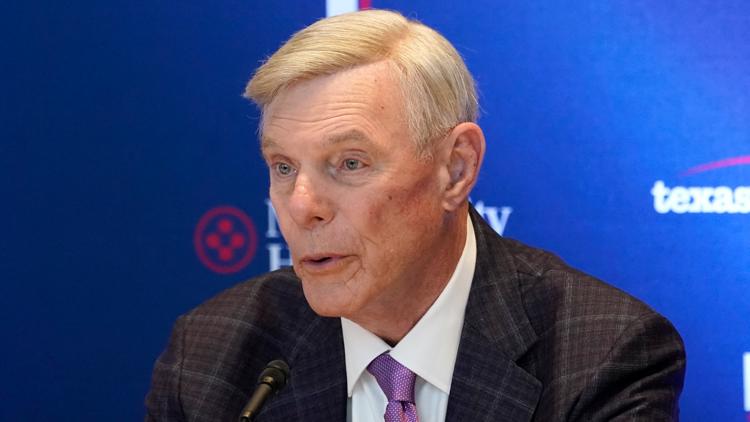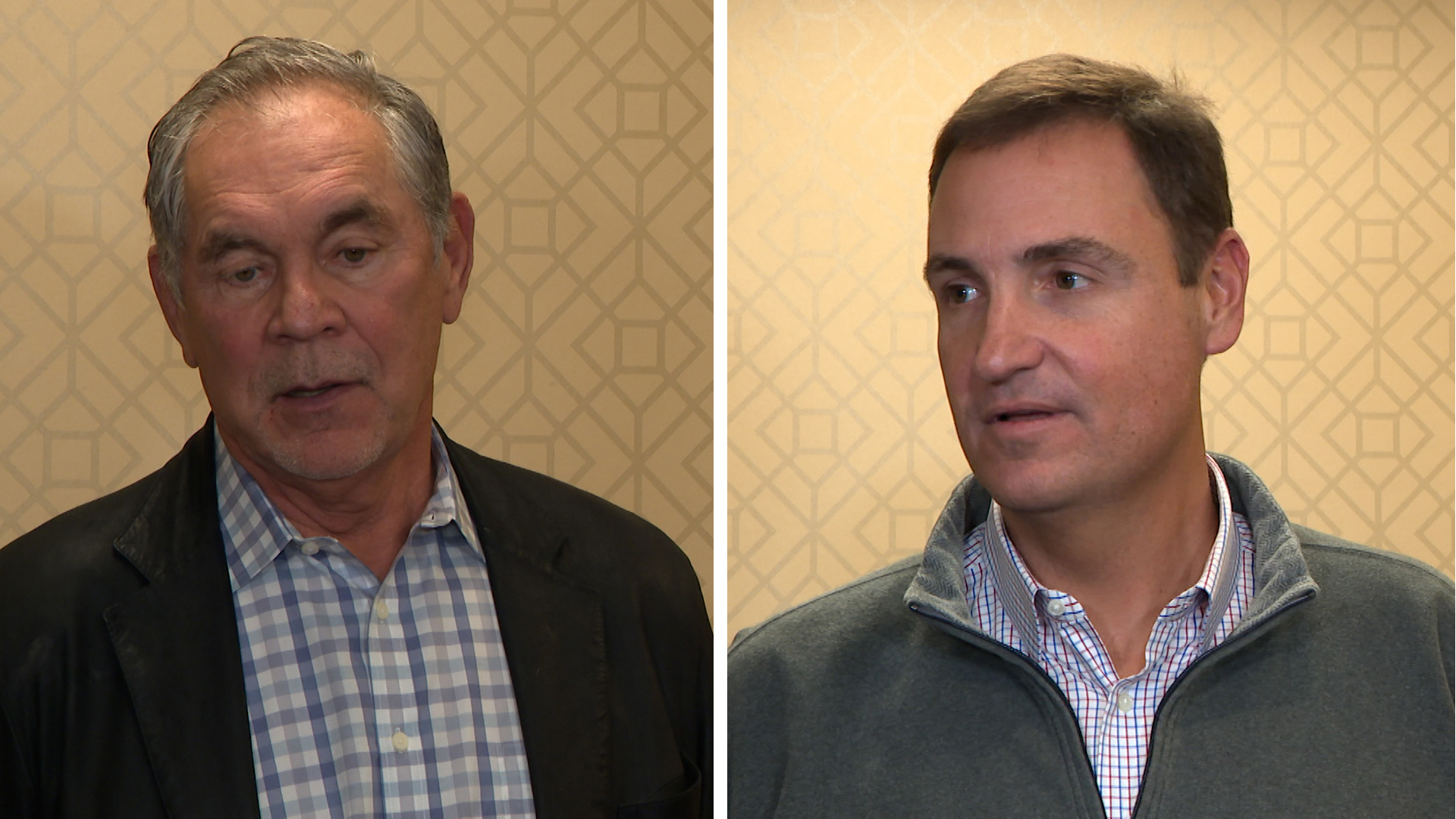ARLINGTON, Texas — As we near Thanksgiving, and teams start to finalize plans for the Hot Stove season, one question on the minds of baseball observers is how much money their team will have to play with this offseason to put together a team that can compete in 2025.
The Winter Meetings are set to happen in Dallas in just around a month, and while trades and signings can be made at any time, most of the big deals involving high-profile free agents are likely to happen during or after the meetings.
For Texas, who spent a difficult and disappointing follow-up effort after their 2023 World Series championship with a middling 2024 season that did not end in a return trip to October, the question is how much money are they willing to spend to address their shortcomings?
The Threshold
The first Competitive Balance Tax or “Luxury Tax” surcharge threshold for 2025 is set at $241 million. Any team whose payroll for the year exceeds that limit is subject to additional taxes.
For teams who surpass the limit for the first time, they are subject to a 20% tax on the first $20 million over the threshold. If they exceed the limit for a second consecutive year, that tax jumps to 30% on the first $20 million. The Rangers, who have enjoyed the fruits of some of the league’s best high-dollar free agents in recent years, are facing the prospect of surpassing the limit for the third year in a row.
At that point, Texas would pay a 50% tax on the first $20 million over the limit and would also be subject to having their first-round draft pick drop 10 slots in the 2025 MLB Draft. Co-owner and managing partner Ray Davis has made it clear that one of the priorities for president of baseball operations Chris Young and the Rangers’ front office is to dip below the $241 million limit to reset their penalties.
The payroll
With the mandate in mind, it would seem as though Texas wouldn’t have too much of an issue staying below the limit if they simply did nothing. Coming off the books are the contracts of Max Scherzer, Andrew Heaney, and Nathan Eovaldi. Likewise, relievers David Robertson, Jose Leclerc, and Kirby Yates are free agents.
Meanwhile, several of the Rangers’ key position players are well within their first couple of years of service and ineligible for arbitration. The players that are up for arbitration don’t appear to be breaking the bank with their projected numbers. But, in a 2024 season riddled with injuries to key, high-dollar players, it can be easy to forget that there’s quite a bit of money already tied up with the 2025 team.
Here’s what top-dollar players on the Rangers’ roster are set to earn in 2025. These figures are guaranteed, barring a trade:
- Jacob deGrom - $40 million
- Corey Seager - $32.5 million
- Marcus Semien - $26 million
- Jon Gray - $13 million
- Tyler Mahle - $16.5 million
- Adolis Garcia - $9.25 million
Considering the amount of time that the above players spent on the injured list, Texas is paying a large chunk of their payroll with the understanding that there is a real possibility that they will be paying for more lost time from key players. But those costs must be factored in.
These six players, though, make up a combined $137.25 million of the $241 million limit giving Texas some wiggle room, but health is a key to determining their fate once again after an injury-filled 2024 season.
Players who have earned arbitration will also figure into the 2025 payroll. Several players who have accrued enough service time will be eligible for noticeable raises going into the season, with rates estimated by MLB Trade Rumors.
- Nathaniel Lowe - $10.7 million
- Jonah Heim - $4.8 million
- Dane Dunning - $4.4 million
- Josh Sborz - $1.3 million
- Leody Taveras - $4.3 million
Again, this doesn’t appear to be a backbreaker for the projected payroll, but with Texas making a concerted effort to not go above the $241 million payroll mark for the 2025 season, every dollar counts. Arbitration players make up another $25.5 million of the pie, though some might be bigger candidates to be traded if the Rangers are fully pinching pennies.
Other players, such as Josh Jung, Evan Carter, and Wyatt Langford, but also Roansy Contreras and Josh Smith aren’t eligible for arbitration and will receive minimum salaries. The salaries of the players who are ineligible for arbitration are estimated to be around another $17 million.
All told, the above figures, plus the contract buyouts of Andrew Chafin and Robertson, minor league salaries, and benefits bring the Rangers’ projected 2025 payroll to just over $191 million.
With the first luxury tax threshold sitting at $241 million, that gives the Rangers just under $50 million to spend on free agents this winter. $50 million might seem like a lot, but consider the holes that Texas needs to fill.
The Rangers need potentially 3 to 4 relievers with much of their best bullpen arms heading out the door, a backup catcher that will be asked to spell Jonah Heim often, a glove-first outfielder in the Travis Jankowski mold, and potentially a couple of starting pitchers, depending on how young hurlers like Kumar Rocker and Jack Leiter are shaping up to take spots in the rotation.
Despite having much of the lineup set, the bats floundered in 2024, which could lead to Texas looking to shake things up and add a hitter or two.
Of those two starting pitchers that the Rangers might look for, Young and the rest of the front office appear ready to enter serious negotiations in an effort to bring Texas native Eovaldi back to Arlington. Eovaldi, who made $17 million in 2024, could easily command half of Texas’ available cache on a short-term deal based on his outstanding two years with the Rangers.
Trades could give Texas a little more room to work with. Texas could also opt to cut ties with players like Garcia or Taveras to get themselves off the hook before they receive raises in arbitration, but then they would be forced to replace them on the roster too.
Overall, it’s a bit of a Gordian Knot for Young and new general manager Ross Fenstermaker to look to cut through, as the front office must figure out how to field a team intent on returning to the World Series all while satisfying ownership’s orders to get below the dreaded Luxury Tax threshold.
What do you think the Rangers will spend enough to contend again in 2025? Share your thoughts with Matt on Twitter @FisherWritesMLB.



